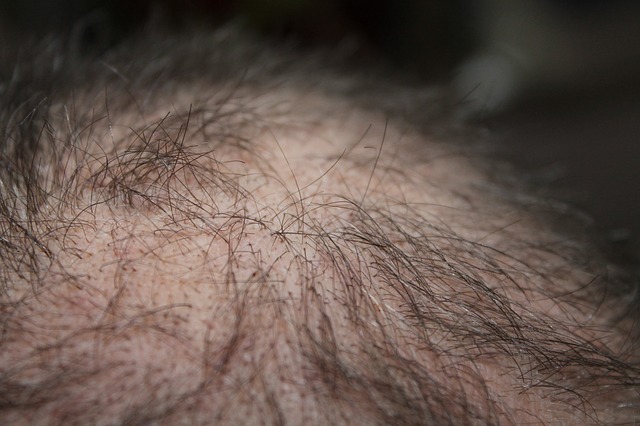Lifestyle
Hair Transplant is Emerging as the Number 1 Solution for Hair Loss in South India

More South Indians are going for Hair Transplant as the solution to hair loss, as the prices of the treatment drop. South India claims to have some of the best Indian healthcare achievements when it comes to hair loss. These include world’s biggest chain of hospitals, millions of medical tourist’s flocking to get a low-cost treatment, and innovative surgical procedures. These achievements have pushed more and more South Indians to seek support of this treatment to reduce their baldness.
Most of the people today are affected by the hair loss. The prime reason for that is the genetic or hereditary baldness. But there is an environmental factor too, that accelerates the hair loss problem and one need to have a reliable treatment to sort out the issue of Hair Loss.
Solution for the above all problems is a hair transplant. The hair transplantation available in south India is a straightforward concept. Most people who experience hair loss still have an abundance of hair growing on the back and side part of their scalp called donor area.
The required hair is removed from the donor area and implanted on the bald areas of the person called recipient area.
The cities in South India where you can find the best Hair transplant being performed are Chennai, Hyderabad, Visakhapatnam and Bangalore. Outstanding innovations in healthcare are taking place in these cities.
Why Hair Transplant in South India?
As per the previous statistical records, you can compare the difference between the cost of hair transplant in South India with the cost of hair transplant in other regions in India, it is about 25-30 percent lesser than the other parts of the country.
Due to the minimal hair transplant cost in south India, it is turning into being the most preferred destination for hair transplantation treatment across the world.
South India is broadly known for financially savvy therapeutic strategies, which offers reasonable hair transplant surgeries and treatment choices.
Different Types of Techniques Available in South India
The modern techniques are permanent, and they pick up follicular clusters of hair. This process is called Follicular Hair Transplantation (FUT) and follicular unit extraction (FUE). And the implantation process is done with the help of methods like Direct hair implant (DHI) and Stick and placement method.
Follicular Unit Extraction (FUE)-
FUE comes with the latest extraction process in hair transplant, with minimally invasive technology and advanced grafting techniques.
Here in this method, the extraction of hair follicles is done with the help a device that makes a tiny circular incision around the hair follicles to isolate the graft.
The graft is then extracted directly from the scalp using forceps. By using a high-powered stereo microscope, and specially trained technicians they will isolate, prepare and ensure that the follicular grafts remain in good condition for implantation.
These Follicular units are arranged into groups depending on the number of hairs contained in each hair follicle (1-4) hairs are commonly found within each follicle.
Follicular Unit Transplant (FUT)-
This method is known for its highly advanced technique in hair transplantation, by this method, the transplanted hair will have natural hair growth and it will be a good choice for people who has large baldness level on their head.
In this, the hair transplant is done by removing the entire strip of skin from the backside of the scalp where the hair fall is less.
With the help of stitches, the skin is covered in the area from where the follicles had removed. The area from where the strip is taken will leaves, a linear scar on the scalp.
The strip that removed which contains the hair follicles is divided into grafts consisting of one or two follicles.
Thousands of these grafts are placed into tiny incisions made on the bald areas of the patient’s scalp, in a single session.
Direct Hair Implantation (DHI) –
Once the harvesting of hair follicles process is performed with the help of either of the above procedures then the implantation process begins.
The implantation process is performed with the help of the implanter pen. The extracted hair follicles are inserted into the implanter pen.
And then the physicians will make the incision on the bald area with the help of implanter pen and they will insert those hair follicles into the bald area.
Platelet Rich Plasma (PRP) –
PRP or Platelet Rich Plasma Therapy is a safe non-surgical procedure that gives good results for hair regrowth. This procedure is mainly used to overcome hair loss and hair thinning.
You may need multiple sessions for the result to show. It is a simple procedure wherein the doctor removes some blood from your body and treats it in the centrifuge.
By doing so he separates the platelets from the rest of the blood as the plasma in our body is rich in active growth factors that can boost the hair growth.
Lifestyle
How Magic Moment Resort Became the Pioneer of a New Era: The First-Ever Dazzler Select by Wyndham

In Central Florida’s packed landscape of family hotels and theme park lodgings, a unique kind of property has emerged. Magic Moment Resort & Kids Club in Orlando is earning attention from traveling families for a simple reason. It delivers joy, warmth, and convenience at a smart value that keeps Disney dreams accessible rather than overwhelming.
By joining Wyndham, Magic Moment Resort unlocks the strength of a global powerhouse, gaining worldwide visibility, advanced technology, and access to Wyndham Rewards, the largest hotel loyalty program on the planet. This strategic move expands its reach, builds guest trust, and amplifies its impact, all while preserving the unique identity that sets it apart.
Just a short drive from the gates of Walt Disney World, the resort sits along the palm-framed stretch of West Irlo Bronson Memorial Highway. The location has long been known for its tourism bustle, yet Magic Moment has carved out a softer identity. It feels playful and colorful, but also intentional. It is designed by a family for other families, and that perspective shapes every experience on the property.
A Philosophy Rooted in Family Connection
Magic Moment Resort was built with a belief often forgotten in today’s tourism industry. Family vacations should feel uplifting instead of stressful, and affordability should not come at the expense of comfort or creativity.
Check-in feels more personal than transactional. Parents arrive with strollers, snacks, and tired children. The staff seems to understand this rhythm instinctively. The energy is warm, the pace is easy, and the tone is set long before anyone even enters the room.
Unlike competing hotels that charge a steep premium for proximity to the parks, Magic Moment focuses on smart value without compromise. Its pricing strategy is refreshingly straightforward. Families can stay five minutes from Disney without draining their travel budgets. For many guests, that difference helps shift resources from hotel costs to experiences. It means more character breakfasts, more souvenirs, and more freedom to enjoy the parks without financial tension following every decision.
Spaces Designed for Children and Considerate of Parents
Magic Moment is filled with color, but nothing feels overstimulating. Instead, the resort offers a sense of wonder scaled to a child’s imagination.
The themed family rooms are a highlight. Children step into rooms that feel lighthearted and whimsical, yet parents appreciate that they are also functional and comfortable. It is the atmosphere of a themed suite without the theme park price.
Its Kids Club and Teens Club reflect that same thoughtful balance. These spaces invite exploration and creativity for children and provide a nurturing level of supervision. Parents can enjoy an hour by the heated pool, relax in a shaded cabana, or simply take a quiet moment while knowing their children are safe and engaged.
The resort’s grounds encourage slow mornings and gentle afternoons.There’s a 30,000 sqf outdoor playground as well as peaceful corners for parents. Importantly, families are not asked to pay additional fees to enjoy them. Magic Moment’s amenities feel generous rather than transactional.
Unforgettable Days at the Parks
For families navigating a Disney vacation, convenience is often the true luxury. Magic Moment delivers this with a complimentary delicious hot breakfast that encourages everyone to sit and enjoy the start of the day rather than rush through it.
Transportation to the parks is included, which removes one of the most common stress points for visiting families. There is no parking lot maze and no long lines at the toll booths. Guests simply board the shuttle and begin their day with ease.
When the sun sets and everyone returns from a day of rides and parades, the resort becomes a place to unwind. Children head straight for the pool. Parents sip Starbucks coffee. The atmosphere is relaxed and bright, and the resort feels like an extension of the Disney experience rather than a pause from it.
A Value That Resonates with Families
What truly elevates Magic Moment is the balance it achieves between smart value and experience. The resort has cultivated a loyal following because guests feel they receive more than they pay for. More thoughtful design. More space for connection. More comfort without excess.
Affordability here does not signal minimalism. Instead, it allows families to breathe. It creates space for shared moments that are often overlooked in the rush of theme-park vacations. Children play freely. Parents unwind without guilt. Families spend more time together and less time navigating logistics.
A Resort Built with Heart
Magic Moment Resort & Kids Club stands out in a region overflowing with hospitality options. Its charm is not rooted in extravagance. It is grounded in sincerity. It reflects the belief that family travel should feel joyful, accessible, and full of color.
For families planning a Disney visit, it represents more than a place to sleep. It is a retreat where memories can form in the quiet moments as much as in the thrilling ones.
At Magic Moment, the greatest luxury is not an amenity. It is the feeling of being exactly where you are meant to be, together.
-

 Tech5 years ago
Tech5 years agoEffuel Reviews (2021) – Effuel ECO OBD2 Saves Fuel, and Reduce Gas Cost? Effuel Customer Reviews
-

 Tech6 years ago
Tech6 years agoBosch Power Tools India Launches ‘Cordless Matlab Bosch’ Campaign to Demonstrate the Power of Cordless
-

 Lifestyle6 years ago
Lifestyle6 years agoCatholic Cases App brings Church’s Moral Teachings to Androids and iPhones
-

 Lifestyle5 years ago
Lifestyle5 years agoEast Side Hype x Billionaire Boys Club. Hottest New Streetwear Releases in Utah.
-

 Tech7 years ago
Tech7 years agoCloud Buyers & Investors to Profit in the Future
-

 Lifestyle5 years ago
Lifestyle5 years agoThe Midas of Cosmetic Dermatology: Dr. Simon Ourian
-

 Health7 years ago
Health7 years agoCBDistillery Review: Is it a scam?
-

 Entertainment6 years ago
Entertainment6 years agoAvengers Endgame now Available on 123Movies for Download & Streaming for Free
